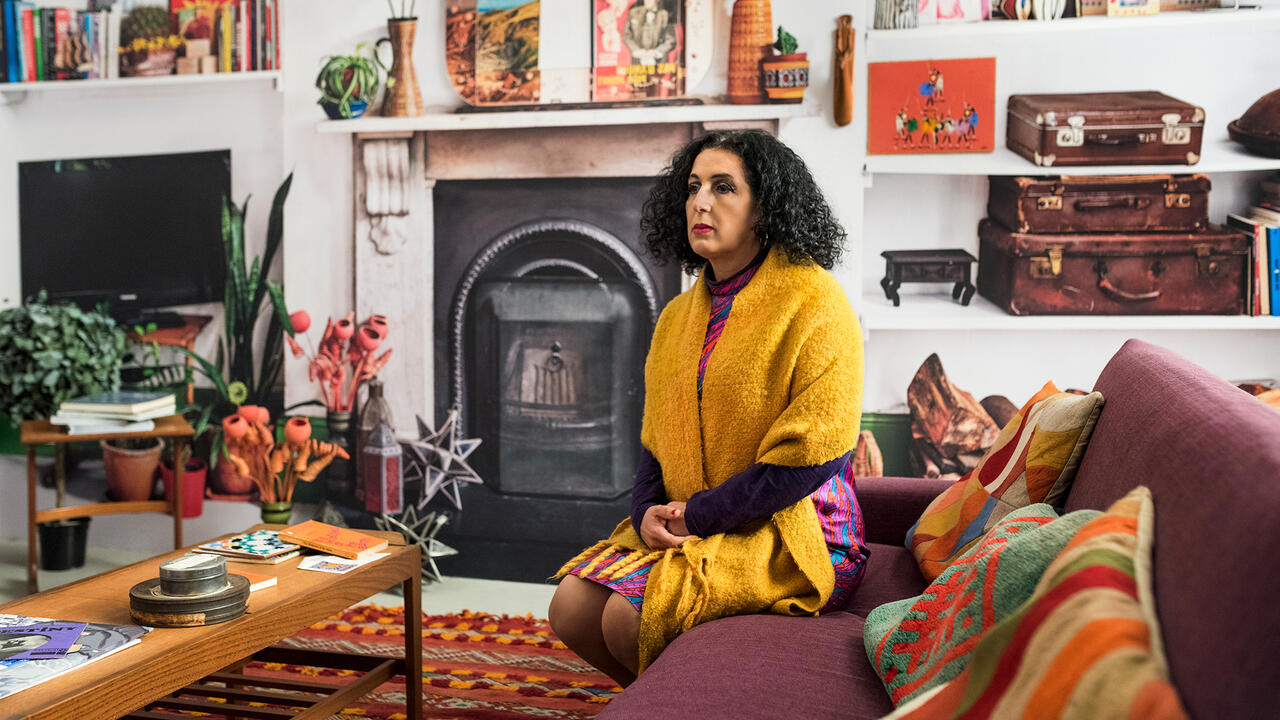Alfredo Jaar
Kamel Mennour
Kamel Mennour

Chilean artist Alfredo Jaar’s solo exhibition at Kamel Mennour comprised ten works, dating from 1984 to the present, which scrutinize American and French media coverage of politically disenfranchised groups in Africa and France. The newest piece in the show, du voyage, des gens (Travel, People, 2011), is a three-minute video of an anonymous Roma woman playing the fiddle in the tourist-filled space in front of the Centre Pompidou. The notes she plays are hypnotically looped and the camera focuses tightly on her face. It isn’t until the final moments, when the camera zooms out and the entire Place Georges Pompidou becomes visible, that the woman’s isolation becomes more apparent. There are people around her, but her lament draws little attention from passersby.
The work’s title is a play on the phrase des gens du voyage (literally, ‘people who travel’), French president Nicolas Sarkozy’s euphemism for the inhabitants of impoverished Romanian and Bulgarian Roma shantytowns on the outskirts of Paris. Sarkozy ordered evacuations of many of these camps last year, prompting criticism from the European Union for racial targeting and illegal mass deportations. By inverting the phrase, Jaar emphasizes the work’s visual metaphor – isolation in the face of massive institutional power and a media inclined to look the other way, a theme that was repeated in different forms throughout the exhibition.
The most visceral example was Untitled (Newsweek) (1994), a framed row of Newsweek magazine covers from 1994. Under each cover is a short description of contemporaneous events in Rwanda, when over a million Tutsis and Hutus were killed by the Rwandan Patriotic Front in a systematic campaign of genocide. The covers and captions are often so dissonant as to border on parody: ‘More than 30,000 bodies wash down the Kagera River, which marks Rwanda’s border with Tanzania’; ‘Men, Women & Computers: Is he as cute as his e-mail?’
Like most of Jaar’s work, Untitled (Newsweek) is presented without commentary, but his careful editing and recontextualization leave little room for doubt or interpretation. Likewise, the visual impact of the series ‘Three Women’ (2010) was immediate and unambiguous. The series consists of three tiny, framed portraits of contemporary activists – Graça Machel, Aung San Suu Kyi and Ela Bhatt – illuminated by spotlights. There is an inverse relationship between the work and the reality of these women’s lives: here, the women are tiny in proportion to the presentation they are given, highlighting the disparity between their efforts and the media attention they receive.
Concurrently on view in the courtyard of École Nationale Supérieure des Beaux-Arts was Jaar’s installation The Sound of Silence (1995/2006), for which the artist constructed a metal theatre to house his eight-minute film projection about photojournalist Kevin Carter, who famously committed suicide in the wake of controversy over his Pulitzer Prize-winning photograph taken in Sudan of a vulture waiting near an African child dying of starvation. The film’s titles narrate Carter’s experience as a renegade photographer in Africa, the circumstances surrounding his famous photograph (he waited, watching the struggling child and the circling vulture for 20 minutes in order to get the right shot), the resulting media fall-out and Carter’s eventual suicide. It culminates when the iconic image of child and vulture appears on the screen, just as flashbulbs pointed at the viewer pop, inducing temporary blindness.
Though the work was conceived in 1995, Jaar wasn’t able to realize the installation in its current form until 2006. Certainly, the media climate has changed so drastically in the intervening 16 years that one wonders if the work’s original intention hasn’t itself found a radically new context. Look no further than the recent political overhauls in Algeria and Egypt: the rapid rise in citizen journalism and social connectivity has restructured the balance of power between media and political institutions.
























